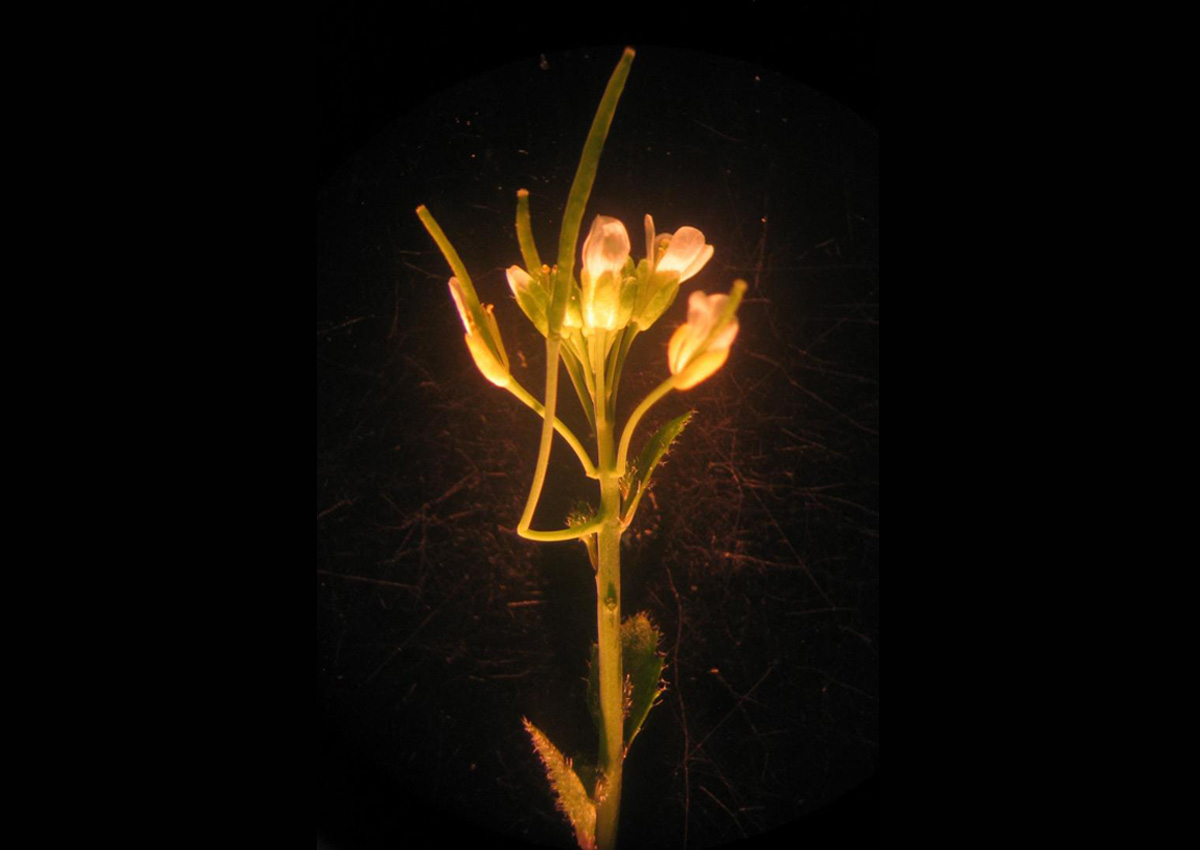
Scientists Report a Plant Part in Arabidopsis for the First Time
June 16, 2021| |
Thale cress (Arabidopsis thaliana) is an important plant especially to scientists trying to understand how plants grow and develop. It has been used for research for decades, and one might expect that its structure has been fully documented, but a study reveals this plant still has some surprises.
A study conducted by scientists at The Pennsylvania State University describes a previously unreported structure in Arabidopsis called the 'cantil', which connects to the stem at one end and hangs in the air to hold up the flower-bearing stalk, similar to the function of a cantilever in structural engineering.
Dr. Timothy Gookin, a postdoctoral researcher working in the Assmann Lab at Penn State University said that he first observed the cantils in 2008 but thought they were an artifact of genetic contamination. Cantils eluded scientists for so long because, first, cantils are rare. They only develop under certain conditions that cause the plant to delay flowering, such as short day lengths, and cantils only form at the precise point at which the plant begins to flower. Dr. Gookin also discovered that some popular Arabidopsis strains have genetic mutations that make them incapable of producing cantils at all.
For more details, read the article in the Smithsonian Magazine.
| |
You might also like:
- Researchers Boost Zinc Uptake in Arabidopsis to Help Alleviate Malnutrition
- NtCIPK11 Confers Salt and Drought Tolerance in Arabidopsis
- Cloning and Vector Construction of AtYUCCA6 Gene from Arabidopsis thaliana
Biotech Updates is a weekly newsletter of ISAAA, a not-for-profit organization. It is distributed for free to over 22,000 subscribers worldwide to inform them about the key developments in biosciences, especially in biotechnology. Your support will help us in our mission to feed the world with knowledge. You can help by donating as little as $10.
-
See more articles:
-
News from Around the World
- Could Gene Drive Protect Nature?
- Biotech a Tenable Solution to Addressing Hunger in Africa, Experts Say
- USDA Pushes Reform on Animal Biotech Regulations
- Study Shows Irish Potato Famine Pathogen Stoked Outbreaks on Six Continents
- Scientists Report a Plant Part in Arabidopsis for the First Time
- Genome of Little Known Disease Offers Hope for Citrus Plants
- Nicotinamide Can Protect Wheat from Fungal Attack, Study Shows
- Australia's Experience Highlights Importance of Regulations and Public Trust in Consumer Acceptance of Gene Editing
- Report Finds COVID-19 Pandemic Slowed Biotech Crop and Animal Approvals in the Philippines
-
Research Highlights
- Endogenous Promoters Induce Expression of Functional Genes in Soybean
-
Plant
- EMBRAPA Tackles Brazil's Regulatory Framework for Genome Editing
- Harmonized Regulations Key to Optimizing the Potential and Benefits of Gene Drive Technology
-
Read the latest: - Biotech Updates (January 14, 2026)
- Gene Editing Supplement (December 17, 2025)
- Gene Drive Supplement (February 22, 2023)
-
Subscribe to BU: - Share
- Tweet

